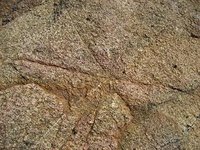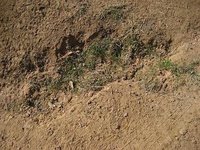Introduction
Welcome to the second edition of ‘Ochre Archives’. Thanks for your very positive feedback on Issue No. 1. We’ve included responses below to the various questions and suggestions made.
Responses to Issue No. 1 Feedback
How big is the property, “Ochre Arch”?
Ochre Arch covers 385 hectares (3.85 m sq metres), small by local standards. For the city based readers, this equates in residential housing terms to around 6,400 average building blocks. Looking at it another way, 400 ha equates to 4 sq km. Thus if the property shape was a perfect square there would be almost 8km of boundary fencing.
What are our core farm management plans?
Some readers thought we were actually running the farm ourselves. Our adjoining neighbours, Harvey and Jacquie Matthews, lease the farm and thus run the property within their total farming operations.
What pests do we encounter on the property?
What is considered a pest from a human perspective varies between individuals, locations and eras. Some of the things that were once or are currently considered pests locally (to the extent that people have historically taken or still take action to eliminate them) are:
Birds: Crows, hawks, eagles, magpies, galahs, sparrows, starlings and noisy minors
Animals: Rats, mice, foxes, kangaroos, emus, feral pigs, wallabies, possums, cats and goats.
Reptiles: Snakes and goannas
Insects: Flies, mosquitoes, ants, spiders, locusts, beetles, wasps, hornets, mites, lice, caterpillars and cockroaches
Invertebrates: Worms in livestock.
Plants: Bathurst Burr, Camel and Paddy melons, Saffron & Scotch thistles, Cape Weed, Blackberries, Box Thorn, Devil’s Claw, Clover burr, Paterson’s Curse, Eucalypt and Cypress Pine trees, Skeleton Weed, Black Oats, Bull Rushes, Barley Grass and Corkscrew Grass.
Aboriginal medicines information
Cheryl Kemp (well known Biodynamic Consultant) let us know that in the book, Emerald Downs (about a convict who lived with the Aborigines in late 1790s in NSW) it explains that Aborigines used honey to heal his burns, bark and clay for the wounds, fungal spores given orally to dull pain, and maggots to keep the wounds clean whilst healing.
Blog Site Establishment
Paul Griffiths (Holistic Management ™ Certified Educator) suggested that rather than send out Ochre Archives as a Portable Document Format (PDF) attached to the covering email we establish a blog site and provide those on the Ochre Archives distribution list with a link to the Newsletter. We’ve taken this advice on board. Phillip now has 2 sites: http://ochrearchives.blogspot.com/ and http://landhear.blogspot.com/. These blog sites contain additional information on our learnings and activities which readers might like to check out from time to time.
Findings from recent trips to the farm
Trees and Shrubs 
We came across a young male flowering Drooping She-oak (Allocasuarina verticillata) as you can see in early July, and thank Toni McLeish & John Briggs from the NSW Department of Environment and Conservation for assisting with species identification.
Rock Formations
 It turns out we have our own mini “Bread-knife” on the farm – for those familiar with the Warrumbungles:
It turns out we have our own mini “Bread-knife” on the farm – for those familiar with the Warrumbungles:
Birds
Phillip’s Mum’s cousin, Robyn Walker wanted to know the species we’d seen to date so we went through our records and listed them all in the blog-site article http://ochrearchives.blogspot.com/2006/06/bird-species-seen-on-ochre-arch-to.html. Since then we’ve seen 2 more species, taking the total to 58 so far:
· Common Starling (Sturnus vulgaris)
· Noisy Friarbird (Philemon corniculatus)
Reptiles At Easter we came across a 1.4 metre Blue-bellied Black (AKA Spotted Black) Snake (Pseudechis guttatus) near the shearing shed, coiled up in a short rabbit burrow and a 1 metre example out in the open in the middle of the oat crop in mid-July. So one cannot assume all snakes hibernate during winter!
At Easter we came across a 1.4 metre Blue-bellied Black (AKA Spotted Black) Snake (Pseudechis guttatus) near the shearing shed, coiled up in a short rabbit burrow and a 1 metre example out in the open in the middle of the oat crop in mid-July. So one cannot assume all snakes hibernate during winter!
Native Animals
We came across a Lesser Long-eared Bat (Nyctophilus geoffroyi) on the floor of the shearing shed one morning and also saw a couple of Common Brushtail Possums (Tichosurus vulpecula) whilst spotlighting for nocturnal wildlife through some of the White Box country up in the hills .
Patterns
The design you can see in this photograph was created naturally during the formation and subsequent uncovering of this granite boulder. The area is approx. 1.5 metrea squared.
Experimentation
A few months ago we came across an eroded section of soil near a gate (high traffic area for stock and vehicles) that was approximately 300 mm (deep) X 800 mm (long) X 300 mm (across). We filled it with a couple of green Camel melon vines, minus the melons! The picture below was taken a couple of weeks ago, suggesting that the eroded area is well on the way to full recovery.
It is not clear whether using Camel melon vines (rather than some other vegetation) had an impact on the rapid repair – we have heard that the sap from these vines / melons was used by Aborigines to eradicate fungal skin ailments such as Tinea.
In Closing
Once again, feedback is most welcome, via email to pdiprose@optusnet.com.au. Stay happy and well.
Kind regards…
Phillip & Jan Diprose
Link to: Ochre Archives Newsletter - Issue No. 1
No comments:
Post a Comment